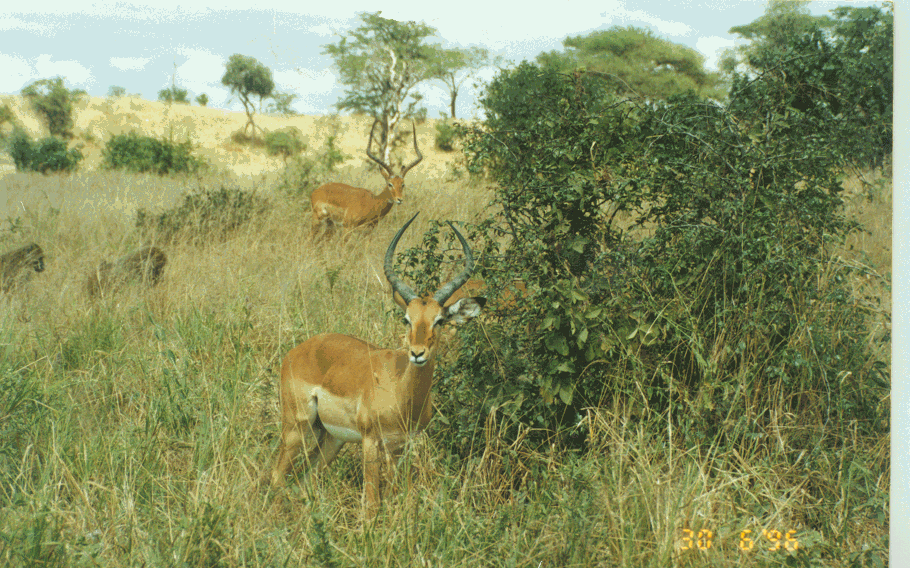
"The endless plains"
| Serengeti National Park |
|
|
|
"The endless plains" |
The name Serengeti comes from the maasai word siringet; referring to an "endless plain";. As you stand on the southern grass plains, you experience this vastness, and can witness one of the greatest concentration of plains and animals left on earth.
Brief Notes On The Serengeti
It's Geophysical Features
The western Corridor
Grumeti:
Stretching almost to the shores of Lake
Victoria, the reach of the Western corridor
is important in preserving ancient migratory routes. In a typical year, the migration
arrives
between June and July, having left the dry plains in the south. Here the migrants mix with many
resident herbivores, including topi,giraffe and buffalo. There is also a resident population
of wildebeest.
Kopjes:
The Serengeti woodland would not be the same without its beautiful rock outcrops known as Kopjes (pronounced as "copy" from the Dutch meaning "little head") .Technically known as inselbergs, the intriguing rounded shapes of these ancient granite rocks are the results of cracking and erosion from exposure to sun and wind and rain. They provide shelter and capture water for a wealth of wildlife and plants. In fact, without such environs, Lions and other large animals would be unable to survive the dry season on the plains.
Northern Woodland
Lobo
Wildebeest move through the Northern woodlands in
most years during June-December to feed on the longer grass lands that persist on this
area. Their range during this time extends north into maasai Mara. There is a diversity of
resident wildlife. There are wilderness campsites, a lodge an airstrip, permanent tented
camp, and extensive game viewing tracks.
The Southern Grass plains
These are the most productive and nutritious grass plains for in the world .In Feb/march one of the most amazing spectacles occurs; For 3-4 weeks,90% of the female wildebeest give birth, flooding the plains with thousands of newborn claves each day, they share these productive grasslands with Migratory Zebra, Thompson's gazelle and eland as well as the residents mainly Grant's gazelle,topi and hartebeest. The Serengeti national Park provides wilderness campsites on the edge of lake Lagarja (also called Ndutu)Payments to the Serengeti national Park for access to this Area, must be made at Naabi Hill Gate.
Seronera
The Seronera Valley is an important transition zone between the Southern plains and the Northern Woodland, it provides a rich mosaic of habitats criss-crossed by rivers, the most prominent of which is the Seronera River from which the area takes it's name. It is possible to see many of Serengeti's resident wildlife including:- Giraffe,buffalo,topi,hartebeest,waterbuck,impala,reedbuck,bushbuck,dikdik,hippopotamus,crocodile,warthog and diverse birdlife.Large prides of lion reside here as well as clans of spotted hyena. The more elusive leopard is also common here but less easy to spot. The river tracks offer the best chance to see a leopard, which will usually rest in the branches of acacia or sausage trees. Cheetah can also be seen here as well as several and Caracal.